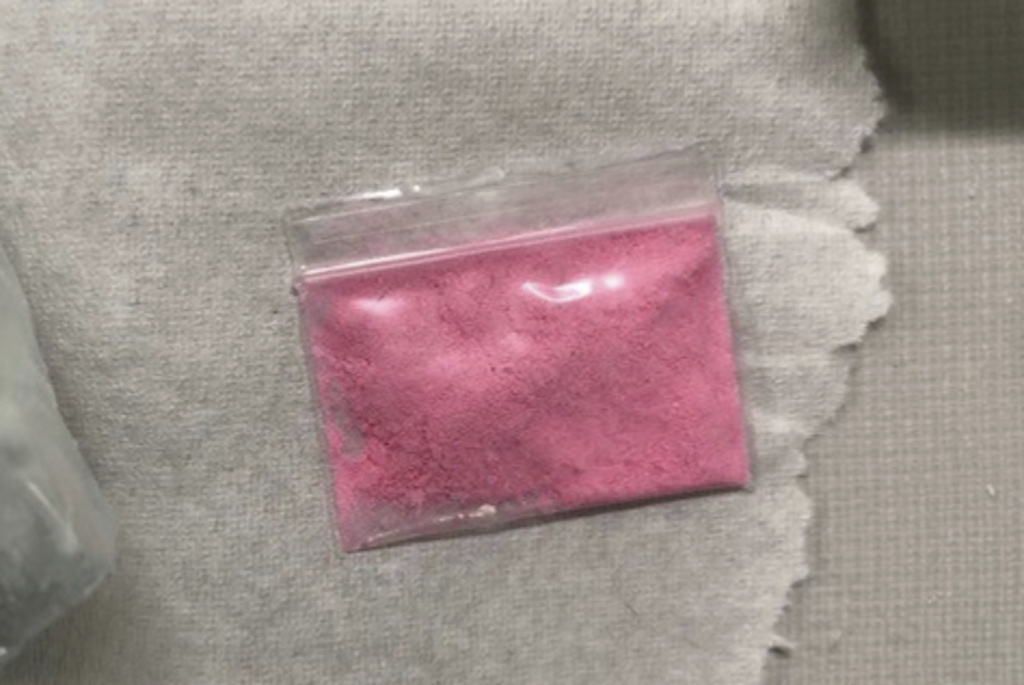Pink Cocaine Exposed: The Dangers Behind the Deceptive Name \ Newslooks \ Washington DC \ Mary Sidiqi \ Evening Edition \ “Pink cocaine” or “tusi” has caught attention as a brightly colored party drug that doesn’t actually contain much, if any, cocaine. Instead, it is often a dangerous blend of various substances like ketamine, methamphetamine, and MDMA. The drug’s vibrant pink color comes from food dye, misleading users who may think it’s a safer, designer drug. Authorities warn of the unpredictable risks and harmful effects associated with this drug, particularly due to its unknown ingredients.
Pink Cocaine Quick Looks
- Misleading name: “Pink cocaine” is a street name for tusi, which rarely contains actual cocaine.
- Mix of substances: Commonly contains ketamine, methamphetamine, MDMA, bath salts, caffeine, and opioids.
- Color source: Achieves its distinctive pink hue through food dyes and coloring agents.
- Unknown dangers: Users often have no idea what’s in the mix, making it particularly dangerous.
- International seizures: U.S. authorities have intercepted large batches off the coasts of Mexico and Central and South America.
- Health hazards: Effects can include hallucinations, breathing difficulties, and dangerous interactions with alcohol.
- Drug trend history: The term “tusi” is likely a reference to 2C-B, a euphoric party drug from the 1990s rave scene.
Deep Look
The name “pink cocaine” or “tusi” serves as a marketing gimmick, making the drug seem more exotic or designer than it truly is. Joseph Palamar, a drug trend expert from NYU Langone Health, says that the colorful powder is more about branding than its actual content. “It’s often a concoction of ketamine and other drugs. Sometimes it has cocaine, but that’s rare,” Palamar explained. The term “tusi” is thought to have originated from 2C-B, a drug from the 1990s rave culture, which had euphoric and hallucinogenic effects. However, modern versions of pink cocaine typically don’t contain 2C-B either, adding to the confusion for users who might think they’re getting something far different.
What makes this drug particularly dangerous is the wide variety of substances that could be in any given batch. “Pink cocaine is basically whatever someone decides to mix together and then dye pink,” Palamar notes. Some versions have been found to contain ketamine, methamphetamine, MDMA, bath salts, opioids, and even caffeine. The unpredictable composition means that users can never be certain of what they’re ingesting, making overdoses or severe adverse reactions more likely.
The powder’s vibrant pink color often tricks young partygoers into thinking it’s a trendy or relatively safe drug. But the reality is far more troubling. Food coloring or dye is added to the mix purely to create the appearance of a unique drug, but there’s no guarantee that the concoction will act in any consistent way. “It’s just some pretty powder that their friends are using, and they probably have no idea what it’s supposed to be,” Palamar explains.
This uncertainty about its contents is one of the primary dangers of pink cocaine. Users might think they’re ingesting cocaine, a stimulant, but instead, they could be taking ketamine, a dissociative anesthetic. Ketamine, though used medically for surgeries and, more recently, to treat depression and chronic pain, can have severe side effects when used recreationally. In large doses, it can cause hallucinations, dissociation, and significant impairments to breathing and heart function. Many users expecting a cocaine-like effect could wind up in a very different and potentially harmful state of mind.
One particularly risky scenario Palamar warns about is the combination of alcohol and pink cocaine. Someone who has been drinking and takes the drug expecting the stimulant effects of cocaine may be in for a rude awakening if the batch contains mostly ketamine. The dissociative effects of ketamine can make users feel disconnected from their bodies and surroundings, which can be especially unpleasant when mixed with alcohol. “If you’ve been drinking, it’s going to make you sick to your stomach, and the dissociative effects are not going to be very pleasant,” Palamar adds.
Another significant concern is how and where pink cocaine is being manufactured and distributed. In May 2023, the U.S. Coast Guard seized pink cocaine along with other drugs off the coasts of Mexico, Central America, and South America. This was one of the first documented cases of large-scale trafficking of pink cocaine into the United States under the guise of “tusi.” However, Palamar points out that the drug doesn’t have to come from abroad. It’s relatively easy for local drug dealers to create their own batches by mixing a variety of substances and adding pink dye. This only increases the unpredictability, as there are no quality control measures in place.
The international trafficking of pink cocaine raises additional concerns for law enforcement, who are already dealing with the complexity of the opioid crisis and the spread of fentanyl. Now, with a drug like pink cocaine being introduced into the market, the challenge of keeping users safe becomes even more difficult. Authorities are warning that the influx of this drug could lead to more overdoses, especially among young people who may be unaware of what they’re really taking.
In essence, the dangers of pink cocaine lie not just in its misleading name but in the fact that users are playing a game of Russian roulette with what they’re ingesting. The drug’s rise in popularity is alarming given its unpredictability and the severe risks it poses. As more people become aware of its actual composition, authorities hope to curb its spread before it becomes a larger public health threat.







